#Schaffgotsch
Explore tagged Tumblr posts
Text

Rainy evening. Schaffgotsch Palace. 1890 r.
0 notes
Text

Postcard circa 1922 depicting The Prinz-Heinrich hut with the summit of Schneekoppe (Sněžka) in the background.
Sněžka is on the border of the Czech Republic and Poland in the Giant Mountains (Krkonoše).
The first building on the mountaintop was the Chapel of Saint Lawrence (Laurentiuskapelle), built c. 1665–1681 by the Silesian noble Schaffgotsch family to give thanks to God and shelter to travellers as it also served as an inn for a brief period of time. The so-called Prussian hut (Preußische Baude) was built on the Silesian (now Polish) side in 1850, followed by the Bohemian hut (Česká bouda) on the Bohemian (now Czech) side in 1868, both built with the purpose of providing lodging. The Prussian hut was rebuilt twice after fires (1857 and 1862), and the (after 1945) "Polish hut" was finally demolished in 1967. The Bohemian hut fell into disrepair after 1990 and was demolished in 2004.
5 notes
·
View notes
Photo
A very similar sword, considered functional and reportedly used to behead Freiherr Hans Ulrich von Schaffgotsch, Silesian noble and war hero, is displayed in the National Museum in Wrocław, as I learned lately.

Executioner’s Sword, late 1600s, Cleveland Museum of Art: Medieval Art
Although the axe was favored in England, for centuries swords were used throughout Central Europe for beheadings. The blades were often etched with moralizing inscriptions and designs representing Justice (as here), the gallows, the rack, or the Crucifixion. By the early 1700s swords were no longer used in Europe for executions, but they still functioned as symbols of power. This sword was probably ceremonial. Size: Overall: 108.9 cm (42 7/8 in.); Blade: 85.7 cm (33 ¾ in.); Quillions: 22.5 cm (8 7/8 in.); Grip: 15 cm (5 7/8 in.) Medium: steel, wood, brass and copper wire
https://clevelandart.org/art/1916.1620
718 notes
·
View notes
Photo




Jelenia Gora - Cieplice, Poland - Schaffgotsch palace (today = Politechnika = Technical University dept.)
#Piastowski#square#politechnika#university#uniwersytet#techniczny#technical#building#budynek#Gebaude#palace#Schaffgotsch#pałac#palast#plac#Jelenia Góra#Jelenia Gora#Lower Silesia#Dolny Śląsk#Dolny Slask#Cieplice#facade#fasada#szkoła#school
2 notes
·
View notes
Text

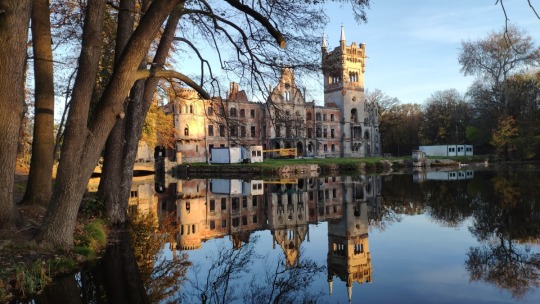
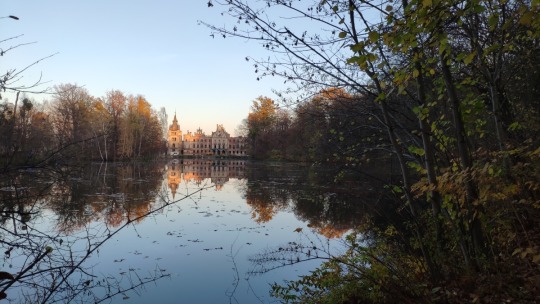
Zdjęcia: Aneta Mis
#Kopice#Koppitz#Schaffgotsch#pałac#zabytek#ruiny#urbex#mauzoleum#mauzoleumkopice#architektura#schloss#kopicepl#grupakopicepl#opolskie
0 notes
Video
instagram
📸 Ruiny pałacu Schaffgotschów w Kopicach. 📰 Dawna perełka tego miejsca, od ostatniego pożaru w 1956 roku straszy tylko pustymi murami. Obecnie otoczony wysokim płotem i z stałą ochroną, czeka na swoje lepsze czasy, przez ostatnie 10 lat wielu już go próbowało odbudować, ale jak na razie kończyło się tylko na chęciach :) Przez park wokół widocznych stawów i pałacu na wodzie jest poprowadzona dzika ścieżka, czas przejścia całej ścieżki zajmuje około 40 min. Obok zamku można zostawić samochód. 🗺️ Kopice, Opolskie , Poland 🇵🇱 📍50.6446556,17.4429258 #pałacwkopicach #opolskie #ruiny #polska #palac #zabytek #kopice #Schaffgotsch #opuszczone #architektura #abandoned #neogothic #ruins #opolszczyzna #dron #drone #drohne #ドローン #дрон #niesamowitemiejsce #historiapolski #zwiedzamypolskę #pałacepolskie #polskiepałace #polskanaweekend #kopciuszek #dronephotography #djimavicair2 #djiglobal (at Pałac w Kopicach) https://www.instagram.com/p/CO3fEZvFxtP/?igshid=1pludmh71whob
#pałacwkopicach#opolskie#ruiny#polska#palac#zabytek#kopice#schaffgotsch#opuszczone#architektura#abandoned#neogothic#ruins#opolszczyzna#dron#drone#drohne#ドローン#дрон#niesamowitemiejsce#historiapolski#zwiedzamypolskę#pałacepolskie#polskiepałace#polskanaweekend#kopciuszek#dronephotography#djimavicair2#djiglobal
0 notes
Photo

Neoklasycystyczne mauzoleum rodziny Schaffgotsch w Kopicaxh z 2 połowy XIX wieku #Kopice #mauzoleum #Schaffgotsch #grobowiec #kaplica #LoveSilesia (w: Kopice, Opole, Poland) https://www.instagram.com/p/By1bJNvI2ms/?igshid=brxf3tsjgkpd
1 note
·
View note
Note
minor german catholic royalty/nobility are great value for absolutely batshit names. e.g. Johannes, Hereditary Prince of Schwarzenberg (born 1967) has the full name of Johannes Nepomucenus Andreas Heinrich Joseph Karl Ferdinand Johannes Evangelist die Heiligen Drei Könige Achaz Michael Maria. and then there's the surnames... "Oettingen-Oettingen and Oettingen-Wallerstein", "Schaffgotsch genannt Semperfrei von und zu Kynast und Greiffenstein". imagine filling out a form.
Damnit I was planning to call my child Johannes Nepomucenus Andreas Heinrich Joseph Karl Ferdinand Johannes Evangelist die Heiligen Drei Könige Achaz Michael Maria but now everyone will think I’m copying him!
#ok but does he have the first name johannes and the middle name johannes?#is he the royal version of moon moon?#ask#qvietbatpeople#deposed royal families
22 notes
·
View notes
Text
21. A LA MÊME. Baireuth, 17 août 1740. + XXXV. DESCRIPTION POÉTIQUE D’UN VOYAGE A STRASBOURG.
21. A LA MÊME.(王妃へ)
Baireuth, 17 août 1740.
Madame, J’ai reçu votre lettre sur mon départ, et je réglerai tout à mon retour, touchant les matériaux que vous me demandez, charmé de pouvoir vous faire plaisir. Ma sœur se porte, fort bien, et j’espère qu’elle ne nous donnera plus de frayeurs avec ses indispositions. Je pars après-demain pour Strasbourg,a et de là pour Wésel. Adieu, madame; j’espère vous retrouver en bonne santé, et que vous ne m’oubliez pas. a: Voyez t. XIV, p. XIII, no XXXV, et p. 181-187.
**
21 バイロイト、1740年8月17日。
マダムへ (バイロイトからの)出発時にあなたの手紙を受けとりました、そして帰国しましたらお尋ねの素材についてあなたが喜ぶであろうと、私は確信したので、帰国時にすべてを解決いたします。 姉は元気です、とても良かった、神に感謝します、 そして私は彼女の不安定さが私たちを不安にさせないことを望みます。 明後日ストラスブールに発ち、そこからヴェーゼルに向かいます。 さようなら、マダム。 またお元気でお会いできることを願っています。
**
※注釈から下記のようなことをしてたらしい。仲良しのお友達と弟連れておしのび旅行。 たしかこのときに長年の推しであるヴォルテールに初対面。ウキウキな王様。
XXXV. DESCRIPTION POÉTIQUE D’UN VOYAGE A STRASBOURG.
Je viens de finir un voyage entremêlé d’aventures singulières, quelquefois fâcheuses, et souvent plaisantes. Vous savez que j’étais parti pour Baireuth afin de revoir une sœur que j’aime et que j’estime. En chemin faisant, Algarotti et moi, nous consultions la carte géographique, afin de régler le tour que nous prendrions pour aller à Wésel. On parla de Francfort-sur-le-Main, et comme il nous parut sur la carte que la voie de Strasbourg ne pouvait être un trop grand détour, nous la choisîmes par préférence. L’incognito fut résolu, les noms choisis,b la fable choisie et ajustée; enfin, tout arrangé et concerté du mieux, nous crûmes d’aller en trois jours à Strasbourg. Mais le ciel, qui de tout dispose, Régla différemment la chose. Avec des coursiers efflanqués, En ligne droite issus de Rossinante, Et des paysans en postillons masqués,
a :Envoyée de Wésel à Voltaire, le 2 septembre 1740. b :Frédéric, voulant garder l’incognito dans son voyage, se fit appeler comte Dufour; Algarotti prit le nom de Pfuhl, et le prince Auguste-Guillaume celui de comte de Schaffgotsch. Léopold-Maximilien, prince héréditaire d’Anhalt-Dessau, adopta aussi un nom supposé.
XXXV. ストラスブール旅行の詩的な描写
私は今、特別で時に不幸で、そしてしばしば愉快な冒険に散りばめられた旅を終えたところです。 私がバイロイトに行ったのは、私が愛し尊敬している姉に会うためです。 途中、アルガロッティと私は地図で検討しあいしながら、ウェーゼルに行く旅程を決めました。 フランクフルト・アム・マインの話をしていたのですが、ストラスブールまでの道のりが地図に書いてあったので、あまり遠回りにはならないだろう判断し、好みでそれに決めました。 お忍びの偽名をを決め、旅程を調整し、最終的には最高の準備をして,3日後にはストラスブールに行こうと考えていました。
天国を手に入れた我らは いろんな事柄を収拾し、 配達人達はロシナンテ※3 を駆り 御者に変装して目的地へまっしぐら a:1740年9月2日、ヴェ―ゼルからヴォルテールへの特使。
b:フレデリックは、旅の中で人目を忍ばせるためにド・フール伯爵と名乗りました。 アルガロッティ※1はド・プフール、アウグスト・ウィルヘルム王子※2はド・シャフゴッチ伯爵の偽名を使いました。 アンハルト=デッサウの皇太子レオポルド=マクシミリアンも使っている。
※1 仲良しのお友達なイタリア出身のハンサムな彼氏。あだなは「パドヴァの白鳥」近年みつかった国王のエロいポエムの相手は彼。 ※2 10歳違いの弟。お父様のお気に入りだった彼は、国王が逃亡事件を起こした時には後継者候補にあがったことも。甥っ子国王のパパ。 ※3『ドン・キホーテ』で主人公が乗る馬の名前。
ポエムはかなり意訳。それっぽくなるように整えた。頑張った。 褒めろ称えろ俺様にひざまずけw 要はおしのび旅行に浮かれまくりの国王である。 嫁もかまってあげて・・・・
1 note
·
View note
Text
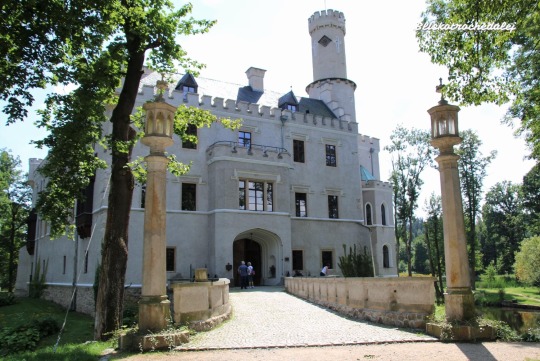
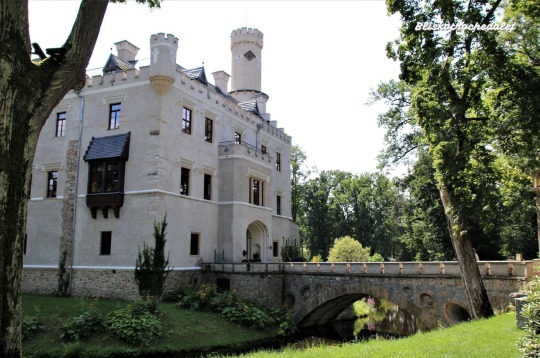
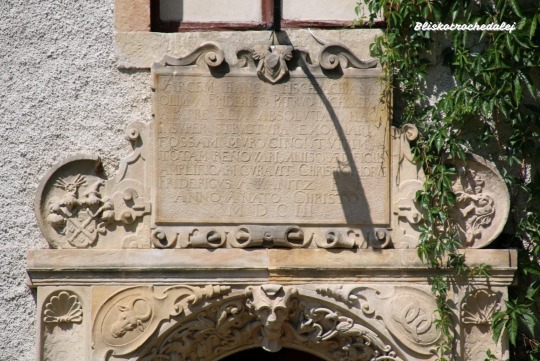
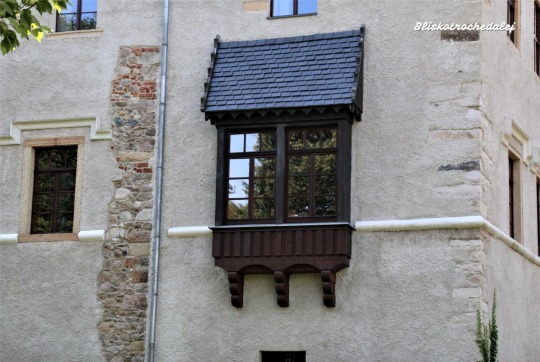
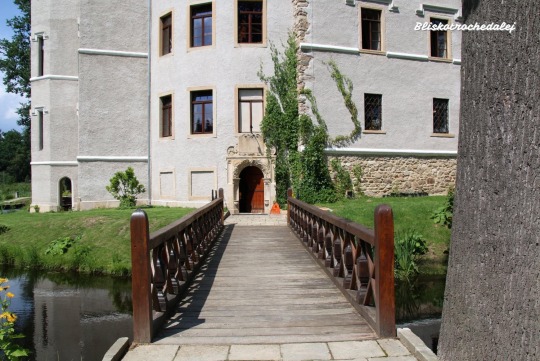

Dolny Śląsk: zamek w Karpnikach 🇵🇱. Więcej historii i zdjęć na:
https://bliskotrochedalej.blogspot.com/2022/03/dolny-slask-wojanow-i-karpniki.html
#Karpniki #zamek #DolnyŚląsk #lato2021
Zamek został zbudowany w XIV wieku przez Henryka Czirna. Kilkadziesiąt lat później budowla trafiła w ręce Hansa Schoffa zwanego Gotsche, protoplastę wpływowego rodu Schaffgotschów, kanclerza księstwa świdnicko-jaworskiego. W 1475 zamek został poszerzony przez jego następcę Kacpra Schoff-Gotsch, w wyniku czego na nasypie otoczonym sztuczną fosą wznosiły się już trzy budowle – baszta i dwa domy mieszkalne, które połączone były murami tworząc tym samym dziedziniec wewnętrzny. W 1580 roku twierdza została sprzedana Friedrichowi baronowi von Kanitz und Talewitz, który w krótkim czasie zabrał się za przebudowę swej nowej własności. Zyskała ona wówczas cechy budowli renesansowej. Przebudowa została ukończona w 1603 roku, o czym świadczy napis na zachowanym portalu wmurowanym w ścianę zewnętrzną od strony fosy. Tekst informuje o tym, że budowa rozpoczęta została przez stryja Friedricha von Kanitz, a dokończona przez ojca Eliasa....
Dolny Śląsk: Zamek w Karpnikach. Więcej historii i zdjęć na:
https://bliskotrochedalej.blogspot.com/2022/03/dolny-slask-wojanow-i-karpniki.html
#Karpniki #zamek #DolnyŚląsk #lato2021
Baixa Silésia: um castelo em Karpniki 🇵🇱. Mais histórias e fotos em:
https://bliskotrochedalej.blogspot.com/2022/03/dolny-slask-wojanow-i-karpniki.html
#Karpniki #zamek #DolnyŚląsk #lato2021
O castelo foi construído no século XIV por Henryk Czirno. Décadas mais tarde, o edifício caiu nas mãos de Hans Schoff também conhecido como Gotsche, um protótipo da influente família Schaffgotsch, o chanceler do ducado ffawidnica-Jaworsk. Em 1475, o castelo foi ampliado pelo seu sucessor Kacpr Schoff-Gotsch, como resultado, três edifícios já foram erguidos no aterro rodeado por um poço artificial - uma bacia e duas casas residenciais, que foram ligadas por muros para formar um pátio interior zny. Em 1580, a fortaleza foi vendida a Friedrich barão von Kanitz und Talwitz, que foi submetido à reconstrução da sua nova propriedade em pouco tempo. Ganhou as características de um edifício renascentista. A reconstrução foi concluída em 1603, como evidenciado pela inscrição num portal preservado murado na parede exterior do lado do túmulo. O texto informa que a construção foi iniciada pelo tio Friedrich von Kanitz e finalizada pelo padre Elias....
0 notes
Text
ah, and theme is Donnersmarck-Schaffgotsch which is absolutely and terribly thrilling, and I cannot wait!
especially that it always leads to so much industrial wonder and history - and my favourite of our historical figures here, Silesian Cinderella!
so far we have four graveyards chosen for Valentines day - I’m twofold excited because I haven’t been to these particular four yet even though I’ve wanted to for a really long time - and the only thing we need is the weather to be more or less confirmed so we know what to wear.
and what lighting use for photos, too.
#I feel an overwhelming need to write about joasia#would anyone want to read me rambling about silesian history and this remarkable gal?
21 notes
·
View notes
Text
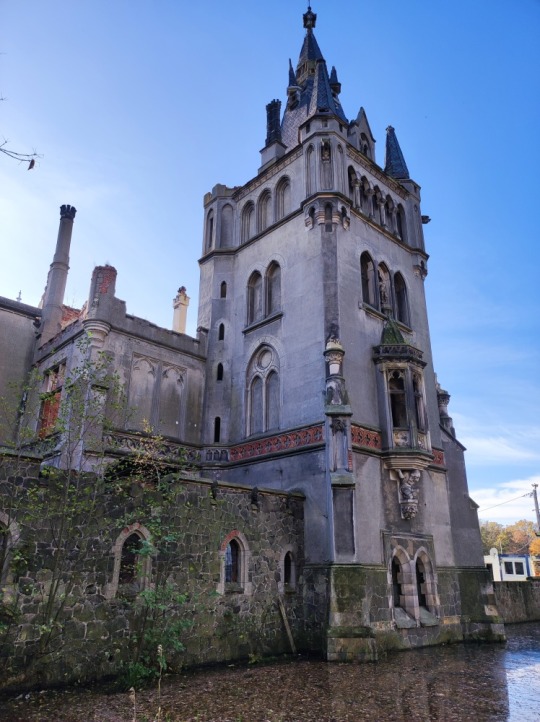

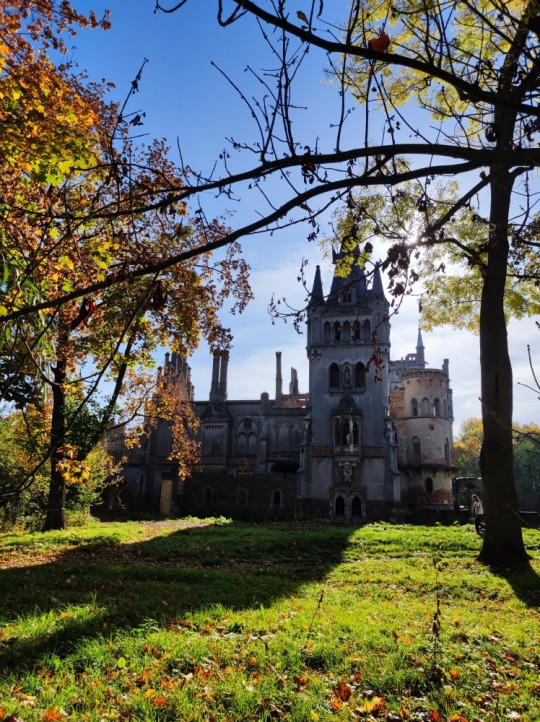

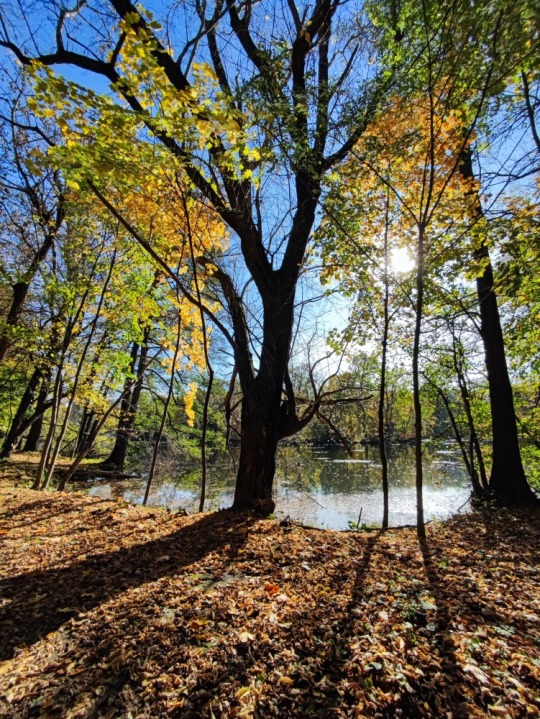
Zdjęcia: Tomasz Iwanow
#Kopice#Koppitz#Schaffgotsch#pałac#zabytek#ruiny#urbex#mauzoleum#mauzoleumkopice#architektura#schloss#kopicepl#grupakopicepl#opolskie
0 notes
Photo

📸 Ruiny pałacu Schaffgotschów w Kopicach.
0 notes
Text
Trespassing at Ernest Hemingway's House
The signs couldn’t have been clearer. PRIVATE PROPERTY. NO TRESPASSING. VIOLATORS WILL BE PROSECUTED. I had been looking for the dead-end street in Ketchum, Idaho where Ernest Hemingway took his life on July 2, 1961, and reckoned I had found it. Thanks to fierce opposition from affluent neighbors in the Canyon Run neighborhood that has sprung up around what was once a very isolated 22-acre property on the Big Wood River, the home has never been open to the public and the address isn’t advertised.
Hemingway and his (fourth) wife Mary bought the Idaho house in 1959, and it has sat empty since his death, save for spells when caretakers resided in the basement. Although I have a deep respect for Hemingway’s work, I’ve long been even more fascinated with his peripatetic life. As someone who has traveled to 70-odd countries and has moved more than a dozen times in the last twenty years, peripatetic Hemingway is something of a kindred spirit. He never sat still, never seemed satisfied, and frequently sought to cure what ailed him with a change of scenery—I’m the same way.
For years, I lived a short walk away from his birth home in Oak Park, Illinois, and when I learned that Hemingway’s Ketchum home had been preserved as a kind of time capsule, I resolved to try to see the place. I wanted to know why it was still closed when so many of the other places Hemingway once called home are open to the public. And, perhaps more important, I wanted to understand what had brought the restless author to a remote valley in the Idaho wildnerness to live out his final chapter.
Many writers have grappled with this question, but none more perceptively than Hunter S. Thompson, who wrote three years after the Hemingway’s death, “Anybody who considers themselves a writer or even a serious reader cannot help but wonder just what it was about this outback little Idaho village that struck such a responsive cord in America’s most famous writer.”
The Ketchum that the pioneer of gonzo journalism discovered in 1964 had just one paved street and was “no longer a glittering, celebrity-filled winter retreat for the rich and famous, but just another good ski resort in a tough league.” Thompson thought that Hemingway had returned to the Gem State because he had lost his way and was pining for the good old days he’d spent there during and after WWII. Hemingway, he surmised, wanted a place that hadn’t changed where he could “get away from the pressures of a world gone mad,” and live among apolitical people who loved the outdoors as he did.
Eager to understand it myself, I left my home in Bend, Oregon, along with my wife, Jen, and two sons, Leo, 10, and James, 8, on a bright Tuesday afternoon in late October (2017) to see what we could find. The eight-hour drive took us through desolate Malheur County, site of the 2016 armed Oregon Standoff, sprawling, ever-expanding Boise, now America’s fastest growing city, and forlorn cowboy hamlets like Fairfield, Idaho, home of the Wrangler Drive-in, where gluttons can feast on two-pound jackalope burgers, which come with six slices of bacon, three onion rings, six slices of pepper jack cheese, and secret sauce among other things.
“Does the fact that Hemingway took his life in this house make the prospect of touring it somehow unseemly or even ghoulish? Some might think so.”
Everyone in Ketchum knows about the author’s connection to the place, but no one knew or was willing to give me directions to his old refuge. A spry woman of late middle age years at the tourist information office in the town’s compact downtown gave me an Ernest Hemingway in Idaho brochure but politely deflected my questions about the house. “You can’t see it, but you can visit his grave, see the Hemingway Memorial, go to our history museum,” she said. I called and later emailed the director of The Ketchum Community Library, which was gifted the home last May, but she said they couldn’t show it to me due to ongoing renovations. She later said she’d tell me about their plans for the place over the phone, but I was never able to reach her despite multiple attempts. They are apparently planning to establish a writer in residence program but the details are unclear.
Thompson’s account provided few clues to the home’s whereabouts, though he did admit to stealing a pair of elk horns that once hung above the front door.
A tour guide told me I could see it from a hill behind a place called the Zenergy Health Club. But even with a pair of binoculars, all I could make out through the dense October foliage was a very distant view of what appeared to be men repairing the roof. I had found a few clues after doing some detective work online, so I knew the house was at the end of a dead-end street, on a large, wooded parcel, north of downtown Ketchum fronting the Big Wood River.
I cycled up and down a host of dead-end streets on a balmy Indian summer afternoon, the kind of day that must have seduced Hemingway years ago. But it wasn’t until I returned to my hotel that I actually found the place, perusing Ketchum’s topography on Google Earth. I saw a house that seemed to fit the bill at the end of a street called East Canyon Run Boulevard, and when I went to investigate, with my family in tow, the “private property” and “no trespassing” signs confirmed we were in the right place.
“Maybe you should go by yourself,” Jen said. “It’s not worth getting arrested for.”
We were parked near the signs, adjacent to a large, mid-century home. It was a Friday afternoon and the street couldn’t have been quieter. More than a decade ago, the Nature Conservancy, which was gifted the property by Mary Hemingway upon her death in 1986, had tried to open up the home to public tours but the neighbors had organized to squash the plan. Surely it wasn’t out of the question that if we were seen driving past the “no trespassing” signs they might call the police? And what if the property had security cameras?
As Jen and I debated these questions, Leo said, “Dad, I don’t want to go in.” But we had come so far, how could I justify turning back?
Hemingway first visited Ketchum on September 19, 1939. He was 40 and his marriage to Pauline Pfeiffer—his second wife—was falling apart. After what biographer Mary Dearborn termed a “disastrous” holiday with Pauline and his sons in Wyoming, Hemingway drove west to rendezvous with his mistress, the war correspondent Martha Gellhorn, whom he would wed a year later in Cheyenne. The Sun Valley Resort had been open for nearly three years and was trying to generate publicity by inviting Hollywood stars and famous writers like Hemingway—who had by this time published A Farewell to Arms, Death in the Afternoon, and To Have and Have Not—to stay at the resort for free.
The resort was the brainchild of W. Averell Harriman, who was the chairman of the Union Pacific Railroad in the 1930s and was later elected governor of New York. Harriman had traveled by rail to ski resorts in Europe and wanted to develop a European-style ski resort somewhere in the West along the UP rail line. In the winter of 1935-6, Harriman hired Felix Schaffgotsch, an Austrian Count, to scout locations. Schaffgotsch toured a host of iconic spots around the West—Mt. Rainer, Mt. Hood, Jackson Hole, Yosemite, and Zion, among others—but didn’t think any of the proposed sites were quite right.
He was about to abandon his quest when he stumbled upon Ketchum. Schaffgotsch was impressed by the pitch of Bald Mountain, the site’s moderate elevation, abundance of sunshine, and absence of wind among other things. The company purchased a 3,888-acre parcel of land for about $4 per acre and constructed what would become the country’s first destination ski resort in about 7 months. In the years to come, visits from a host of celebrities—Marilyn Monroe, Clark Gable, Lucille Ball, Errol Flynn, Gary Cooper, and others—helped transform the quiet valley into a hugely popular destination.
“Everyone in Ketchum knows about the author’s connection to the place, but no one knew or was willing to give me directions to his old refuge.”
Although Hemingway had been invited to visit the resort, he hadn’t booked ahead. Nevertheless, he and Gellhorn were given a free room, number 206 (now #338). (A sin that, if committed today, would bar him for writing for many of the country’s most august publications, including The New York Times.) In the mornings, he worked on what became For Whom the Bell Tolls while Gellhorn completed a short story collection, The Heart of Another. Most afternoons, they explored the area on horseback with friends Ernest dubbed the “Sun Valley mob.”
Ernest hadn’t skied in more than a decade, but came for the chance to hunt duck, pheasant, partridge, antelope, and elk. Martha left for an assignment in Finland in November, and according to Dearborn, Earnest grew despondent, writing to a friend that he was “stinko deadly lonely.” Among other diversions, he shot at coyotes from a low flying plane, which Dearborn says he knew was “not good sport.”
He thought about spending the holidays with Pauline and his sons in Key West, but was told if he planned to re-join Martha after the holidays he wasn’t welcome. The pair divorced in 1940, and Martha and Ernest met to spend another season in Sun Valley on September 1, this time with his sons, Jack, whom they called “Bumby,” then 17, and Gregory, 9. They were given a $38 per night suite for which they paid a token $1. Life Magazine, which had previously written a cover story on the place titled, “Sun Valley, Society’s Newest Winter Playground,” came to photograph him and the resulting piece generated even more publicity for the emerging ski resort.
Hemingway returned to the area four more times to spend the fall and parts of winter between 1939 and 1947. (By 1946, he was no longer getting a free room at the Sun Valley Resort, which was transformed into a Navy hospital, so he stayed at MacDonald’s Cabins, which is a now shuttered budget motel that was called the Ketchum Korral.)
Ernest and the rest of his Sun Valley Mob were regulars at the resort’s Duchin and Ram Bars. He also liked to drink at Whiskey Jacques and the Casino Bar, both of which are still open. By 1959, he had grown frustrated with his notoriety in Cuba and he decided to buy a home in Ketchum. Hemingway was a document hoarder—he reportedly even saved grocery lists—and he believed that Idaho was an ideal place to preserve his letters, manuscripts and other papers, thanks to its dry climate.
The furnished, l-shaped Ketchum home the Hemingways bought for $50,000 in 1959 was built just six years before by Henry J. “Bob” Topping,Jr., a socialite whose family had made its fortune in the tin-plate industry, at a cost of about $100,000. Topping had built the place as a temple of affection for his bride, Mona Moedl, a native of nearby Hailey, Ezra Pound’s hometown. But they’d decided to move to Arizona for health reasons and were apparently eager enough to leave town that they accepted what seems now like a lowball offer.
With its faux redwood and stained timbers, the house looked a lot like the Sun Valley Lodge, which is just as Topping intended. A local tour guide and former state representative, Wendy Jaquet, told me, “Locals joked that Hemingway bought it since he was kicked out of the lodge’s bars and wanted a similar place to drink in.”
The Ketchum Cemetery is a modest place situated on the slope of a sagebrush-covered butte just outside Ketchum’s tidy downtown. Hemingway’s grave is a simple rectangular, granite slab engraved with nothing more than his name and dates of birth and death. He was buried in a rose-covered, dark gray casket; his remains lie next to plots for his wife, Mary, near his son, Jack, and a few of his friends, including Taylor “Bear Tracks” Williams, a guide who was one of his closest confidants.
Other visitors to the grave have found half-drunk bottles of rum, shot glasses bearing bullets, cans of Pabst Blue Ribbon, and other tokens of affection. But all I found were some coins, a small pumpkin, an assortment of pinecones, a cheap pen, and a copy of Marie Hall Ets’ book In the Forest. I wondered what the cemetery did with all the booze people left but there was no one around to ask, and no one responded to my phone calls.
Ketchum is a one-time mining town that’s long been a wintery stew of ski bums and affluent second-home owners. Late October is considered shoulder season—Bald Mountain had just a thin layer of snow near the summit—and so it felt a bit like arriving at a party an hour before the dips have been set out. Hunter S. Thompson described it as a “raw and peaceful little village” when he visited offseason in 1964. It still felt peaceful, but more polished than raw and full of fancy restaurants and overpriced boutiques, mostly staffed by people who couldn’t afford to live in town.
Businesses in Ketchum don’t advertise their Hemingway connections as overtly as his haunts in Cuba and Key West do. For example, walking into the Christiania Restaurant you’d never know he ate his last meal at the place the night before he took his life. (And, according to friends, was in good spirits.)
But the Sun Valley Museum of History has a “Hemingway in Idaho” exhibit with a host of photos and memorabilia, including one of his well-traveled Royal typewriters, a compact little number that seemed too small for Hemingway’s brawny build. (It was found in the attic of a home purchased by a local man named Jim Harris and was later authenticated. Hemingway likely suffered from the degenerative brain disease CTE and in his later years this condition made it impossible for him to work, so perhaps he gave this typewriter to Tillie and Lloyd Arnold, the family that sold their house without clearing out their attic.)
A mile northeast of the Sun Valley resort, there’s an impressive bronze bust of a contemplative looking Papa Hemingway perched on a hill overlooking the serpentine Trail Creek and the 7th hole of a golf course. It was a bluebird day, not a cloud in the sky, with just a faint chill in the air. Beneath the bust, a portion of Hemingway’s eulogy for Gene Van Guilder, a friend who was a publicist for the Sun Valley resort, is engraved on a slate plaque. His words seem written for a day like this.
Best of all he loved the fall The leaves yellow on the cottonwoods Leaves floating on the trout streams and above the hills The high blue windless skies Now he will be part of them forever
The next day was short-sleeve shirt warm, and it seemed hard to believe that in a matter of weeks, the town, now peaceful and almost forsaken, would be bustling with skiers and snowboarders. I fought the temptation to bask in the sun, holing up in the Hemingway room at the Ketchum’s Community Library to peruse stacks of old newspaper articles and files on every aspect of the writer’s life. I asked the librarian, a young woman wearing a sun dress and stylishly retro glasses, for articles on Hemingway’s Ketchum home and she handed me two massive file folders, one mostly filled with articles on his death, the other with photocopies of his FBI files.
The newspaper stories published in the immediate aftermath of his death mostly reflected Mary Hemingway’s attempts to dismiss his suicide as an accident. A UPI story carried the headline, “Gun Takes Life of Hemingway,” which was clearly not written by a card-carrying member of the NRA. An AP story, “Friends Discount Suicide in Hemingway’s Death,” asserted that Hemingway, who had recently received electroshock therapy at the Mayo Clinic, to treat depression, had been in great spirits of late.
“Everybody definitely knows it wasn’t suicide,” said Forest MacMullen, a friend of Hemingway’s who served as a pallbearer at his funeral.
<!–nextpage–>
But of course, he did commit suicide, just like many others in his family. His father, Clarence, a physician who suffered from depression and diabetes, shot himself in 1928. Hemingway’s brother, Leicester, a diabetic who was about to lose his legs, shot himself in 1982. His sister, Ursula, died of a drug overdose in 1966. Thirty years later, his granddaughter, Margaux, a model, died of a barbiturate overdose.
Ernest used his toes to pull the triggers on the W. & C. Scott & Son shotgun that he had traveled with all over the world. According to the book, Hemingway’s Guns, the so-called pigeon gun was given to a Ketchum welder to be destroyed, but some of the mangled remnants were buried in a field. The welding shop is apparently still in business and is being run by the grandson of the original proprietor.
I found a few clues at the library that helped me find the home on Google Earth, and a 2004 article in The Los Angeles Times provided insights into his Ketchum neighborhood and its opposition to opening the home to tourists. That year, in a bid to defray the costs of maintaining the property, the Nature Conservancy introduced a plan to allow three daily tours of up to fifteen participants, who would be picked up in downtown Ketchum and brought to the home in a minivan to reduce parking and congestion concerns. The neighbors weren’t buying it.
“We came here to retire. We don’t want busloads of tourists coming through here 24/7,” Doug Lightfoot, a retired pharmacist, told the LA Times.
But even as Lightfoot insisted that opening the home would do nothing more than help people indulge their “morbid curiosity,” he conceded to the reporter that he too had once asked the Conservancy for a tour of the house.
Hemingway wrote portions of three books in his Ketchum home. This was the place were he chose to die. His homes in Key West, Cuba, and Oak Park are all open the public. Homes where Mark Twain, William Shakespeare, Ernest Faulkner, Charles Dickens, Pablo Neruda, Vladimir Nabokov, Emily Dickinson, Agatha Christie, Gabriel Garcia Marquez, Edith Wharton, and may other famous authors once lived have been turned into museums and serve to inspire those who might not otherwise ever pick up their books.
“The newspaper stories published in the immediate aftermath of his death mostly reflected Mary Hemingway’s attempts to dismiss his suicide as an accident.”
Does the fact that Hemingway took his life in this house make the prospect of touring it somehow unseemly or even ghoulish? Some might think so. But apparently not Anita Thompson, wife of the late Hunter S., who shot himself in the head in the kitchen of his Owl Creek farm in Woody Creek, Colorado in 2005. She still lives in the house and has preserved Hunter’s basement “War Room,” where he worked, just as he left it.
According to press accounts, she’s been working with a family friend to open their home, where she still lives, to a limited number of fans. Her initial plan, for those who passed her vetting process, was to offer a free tour plus Hunter’s favorite breakfast: grapefruit, scrambled eggs, juice, coffee, and fresh fruit suspended in Jell-O, with gin and Grand Marnier drizzled on top, served at 2 p.m. just like he liked it.
But, a year later, after visiting the Hemingway home and touring related Hemingway sites in Ketchum, she told the Aspen Times that she was also inspired to create a writer’s retreat, an offsite museum, and a line of cannabis products in her late husband’s honor. She also returned the elk horns, which were sent to Sean Hemingway, Ernest’s grandson (Gloria’s son) for “karmic reasons.”
Hemingway’s descendants are apparently divided on the question of opening the house to tours—his granddaughter Mariel thinks it should be opened, his daughter-in-law Angela Hemingway thinks the house should be sold so someone can live in it, and his son, Patrick, thinks it should remain closed.
But when I arrived at the KEEP OUT signs near the end of East Canyon Run Boulevard on my last day in Ketchum, it seemed obvious to me. It was a sun-drenched Friday afternoon, about 4 p.m., and the neighborhood was so quiet you could have heard a cat meowing a zip code away.
I considered my family’s pleas to turn back, but I thought back to my visits to three of Pablo Neruda’s homes in Chile in 2014, and recalled that each home was located on streets with neighbors. Those places draw visitors by the busloads—if those neighbors could cope, surely the good people of this neighborhood could tolerate some limited form of tourism that would allow people to see the place where the famous writer chose to end his life.
“Let’s just drive by and take a quick look,” I said, easing past the intimidating signs.
I was immediately struck by the wooded, secluded splendor of the no-go area. There was just one home past the no trespassing signs on our left, an expansive affair that appeared to be a second home unlived in at the moment, and then the Hemingway house, further ahead on our right, perhaps a quarter of a mile away from the cluster of neighbors who had united to keep the place closed to the public.
We pulled up in front of the house, a sprawling, concrete, two-story, earth-colored faux-timber construction, and I rolled down the window to take a photo. I felt like if we didn’t set foot outside, we’d be fine. We noticed a pair of men installing a new roof and Jen said, “Let’s get out of here before they call the police.” But one of the men caught a glimpse of me and simply nodded and went back to work.
Sitting in the car, taking a final look at the house, I felt slightly cheated that we couldn’t go in and see the place, which is staged as a 1961 time capsule. If someone was living there, I’d understand the No Trespassing signs, but what’s the point of an empty house with historical value that no one can see?
And anyway, what would Hemingway want? Would he have been on the side of his neighbors, who think opening the home up would ruin their neighborhood?
He guarded his privacy zealously, and wrote in The Sun Also Rises, “Everyone behaves badly—given the chance.” But he also once said, “The best way to find out if you can trust somebody is to trust them.”
On our long drive home, I had plenty of time to ponder the broader question of what brought Hemingway back to Idaho late in his life, as we motored through the bleak and monotonously scrubby landscape of the Oregon Badlands, where travelers can barely find a toilet, let alone a decent meal in the four-plus hours between Boise and Bend. Thompson, I thought, was right in concluding that Hemingway was a sick, weary man with three failed marriages behind him who felt and looked older than his years. Maybe buying a house in Ketchum, was a last effort to recover the carefree, glory days of yore?
The long drive home gave me plenty of time to consider my own itinerant experiences just four years ago, when we drove west on this same road, after deciding to leave Chicago for Bend. I met my wife in the Windy City, in my twenties, and we’d loved our time living there. Then I joined the Foreign Service, and we’d ended up in Washington D.C., Macedonia, Trinidad, Washington. D.C. again, and then Hungary. I quit in 2007 after a couple years of trying to fight through some difficult times with Multiple Sclerosis.
We moved back to Chicago when Jen was seven months pregnant with our first son (Leo) because both of us associated it with good times. But it wasn’t the same—our friends were now mostly preoccupied with their kids and so were we. After a couple years, we moved back to D.C., then back to Chicago again, and finally, in 2014 to Bend. Somewhere in the Oregon Badlands, on the drive west, a sick feeling nestled in the pit of my stomach as I realized how isolated we were going to be, hours from an interstate—I feared we were making a huge mistake.
Good read found on the Lithub
0 notes
Text
Österreich hat gewählt wie es für die Heimatvertriebenen gültig war aus Böhmen und aus Ungarn, Rumänien war es die alte Hauptstadt der größere Verbundenheit galt als die Übergangshauptstadt Bonn zudem Schwäbisch Gmünd die gegründeten Betriebe wie Schaffgotsch erodierten mit den Arbeitsmarktderegulierungen Österreich hatte jedoch nie Besitz und Einkommen angeboten, somit die Sozialdemokratie nach…
View On WordPress
0 notes